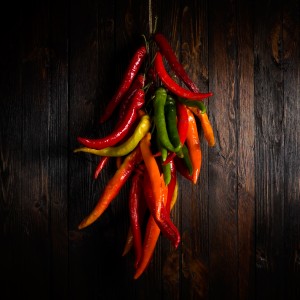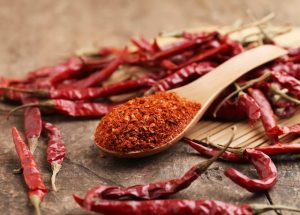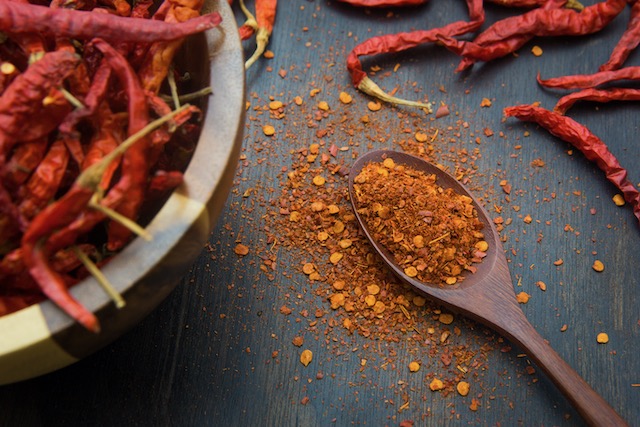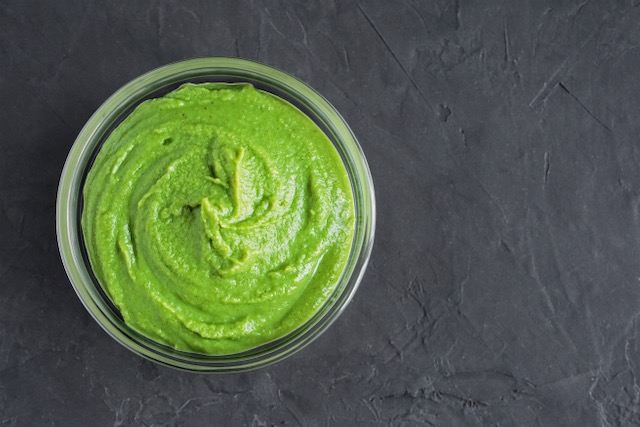3 Unhappy Effects of Food Allergens
 I’m sure you’ve heard about anaphylactic shock and if you have been here for a while you have heard about gluten and its effect on your thyroid, on leaky gut and probably on joint health so today we are going to talk about something different. We are going to talk about three unhappy effects of food allergens that are often understated or ignored. These are weight gain, exhaustion and chronic infections in the body.
I’m sure you’ve heard about anaphylactic shock and if you have been here for a while you have heard about gluten and its effect on your thyroid, on leaky gut and probably on joint health so today we are going to talk about something different. We are going to talk about three unhappy effects of food allergens that are often understated or ignored. These are weight gain, exhaustion and chronic infections in the body.
Weight Gain
There are several ways that hidden, unknown or delayed food allergens can contribute to weight gain. The most important is by creating an ongoing challenge for the adrenal glands and our blood sugar hormones. Our adrenals help us to adapt to all kinds of stress including environmental (extreme conditions), situational (trying to zip up someones jacket, wash the dishes and run a business at the same time), nutritional (not enough macro/micronutrients) or digestive.
Digestive stress is what happens when something we have eaten either through physical means or through an allergy is a perceived threat causing the body to feel under attack. The body will raise cortisol as a result of this and cortisol loves to keep the blood sugar high in these kinds of cases of perceived emergencies… In order to do this the cortisol may resort to catabolizing muscle (breaking down our muscles) and if this energy is not burned off, storing it back as fat. Not good! You’ve probably heard that stress can increase belly fat. This stress doesn’t have to be from a grumpy boss or rush hour traffic. Stress caused by food allergens is stress just the same and can effect our bodies in the same way, by raising the blood sugar and cortisol over time, leading to fat storage.

Exhaustion
Imagine this uncomfortable dance between the stressed digestive system and the compensating adrenal glands, producing our stress hormones, continuing for years in the background. Often we cannot feel this and it is a normal response to the reality of living a normal life until the person suffering from digestive distress and the stress of ongoing allergic responses finally gets depleted in two important ways: Firstly the adrenal glands can be depleted from just creating too much of the same hormones over and over and eventually stop making enough of the growth and repair hormones and deplete their abilities to produce cortisol, the stress hormone, which is actually really needed for that get-up-and-go feeling.
Over time these elevated blood sugar and stress hormones in the body can also cause damage to the insulin receptors, the thyroid receptors, the blood vessel linings and the blood-brain barrier. All of these things can make a person feel fatigued and exhausted.
Food allergies over time can also deplete minerals as the digestive tract becomes inflamed and absorption is decreased. One thing that can make a person feel really tired and “bad” is just plain not having the minerals and amino acids needed to thrive. This combined with the more direct immune-system and leaky-gut related causes of exhaustion not even touched on here combine to make a triple-whammy of food-allergen exhaustion.
OK so food allergens aren’t going to directly cause chronic infections. What are chronic infections? I’m talking about sinus, throat, ear or any other infection or foreign substance in the body that is being fought by the immune system. Our immune systems are constantly working to detoxify endogenous byproducts of our cells, of our digestive processes and of our hormones. There are too many regular drains on the immune system to go into in this article but we will focus on one simple immune system problem that happens with delayed food allergies… distraction!
The immune system is mostly situated physically around our digestive organs. Different sources say between 65-85% of our physical immune systems are located there. It is called the GALT, the gut associated lymphatic tissue. This is our backup system for the things that are not meant to get through the digestive lining ready to fight off what is not good for our bodies. This is necessary, healthy and important. Without going too much into how our bodies develop food allergies for now we know our immune systems have decided to fight against certain peptides in the foods that we are eating and will fight hard when they go through the gut lining.
 Truthfully no matter what a person eats there is some kind of immune system response going to occur. The immune system is distracted and on-guard no matter what we eat as long as there is food in the intestinal tract. That being said when we eat something that contains a known or unknown food allergen our immune systems are distracted fighting this particle extra hard. Since nobody is perfik it is reasonable to assume this is just going to happen sometimes, maybe more frequently than we would like to think however to have it happen continuously will take a lot of the immune system’s resources that it could be using to fight off other infections or clear other toxins in the body or anything else that we would rather our immune systems be working on. One of the worst bits of news is that this reaction can go on for months in the body following a single exposure, continuing this distraction and misdirection of our precious resources.
Truthfully no matter what a person eats there is some kind of immune system response going to occur. The immune system is distracted and on-guard no matter what we eat as long as there is food in the intestinal tract. That being said when we eat something that contains a known or unknown food allergen our immune systems are distracted fighting this particle extra hard. Since nobody is perfik it is reasonable to assume this is just going to happen sometimes, maybe more frequently than we would like to think however to have it happen continuously will take a lot of the immune system’s resources that it could be using to fight off other infections or clear other toxins in the body or anything else that we would rather our immune systems be working on. One of the worst bits of news is that this reaction can go on for months in the body following a single exposure, continuing this distraction and misdirection of our precious resources.
What’s the solution? Since these kinds of delayed food allergens can change over time it is very important to be tuned into your body and how it is reacting to the foods that are available to you. You can of course also get a food allergy panel (really a sensitivity panel) from a lab like Genova or a sensitivity panel through Vibrant Wellness through a qualified practitioner. I do not believe in being in food-allergy prison because the most important focus is decreasing intestinal permeability in order to tolerate a wider variety of foods. I do believe that in healing the digestive system and also the immune system as well as balancing the hormones in the body it is important to avoid the things that are hurting us while we work on the root cause. I welcome your comments below!
Read more


 A second use for cayenne is as a delivery service for other herbs that you may be taking. you may have heard of black pepper helping turmeric to be more easily absorbed in the body. The study that I remember found curcumin was absorbed 2000 times better with the addition of black pepper… but here’s the rub: Black pepper increases the permeability of several parts of our bodies including the digestive tract and this is how it delivers herbs more effectively to the body. As long as there are no toxins, bacterial infections or actual leaky gut going on this is a great idea… but if you are dealing with candida or a bacterial imbalance you will be potentially releasing other unwanted items into your blood stream along with the herbs and constituents you were hoping for. Cayenne is remarkably good as a delivery system for herbs by increasing circulation (only works on things that can actually be absorbed prior to circulating :)) So in this case adding it to a tincture of something like curcumin will help to bring its anti-inflammatory and anti-oxidant properties to different parts of the body and will help it to be absorbed without having to go through the digestive tract (as tinctures are usually absorbed before reaching the small intestine because of the alcohol content).
A second use for cayenne is as a delivery service for other herbs that you may be taking. you may have heard of black pepper helping turmeric to be more easily absorbed in the body. The study that I remember found curcumin was absorbed 2000 times better with the addition of black pepper… but here’s the rub: Black pepper increases the permeability of several parts of our bodies including the digestive tract and this is how it delivers herbs more effectively to the body. As long as there are no toxins, bacterial infections or actual leaky gut going on this is a great idea… but if you are dealing with candida or a bacterial imbalance you will be potentially releasing other unwanted items into your blood stream along with the herbs and constituents you were hoping for. Cayenne is remarkably good as a delivery system for herbs by increasing circulation (only works on things that can actually be absorbed prior to circulating :)) So in this case adding it to a tincture of something like curcumin will help to bring its anti-inflammatory and anti-oxidant properties to different parts of the body and will help it to be absorbed without having to go through the digestive tract (as tinctures are usually absorbed before reaching the small intestine because of the alcohol content).
 Instructions:
Instructions: Ingredients
Ingredients

 So how does Ginkgo Biloba do this? It interferes with something called the Platelet Activating Factor in the blood which contributes to inflammation. Interestingly cancer cells have a large amount of receptors for Platelet Activating Factor and several studies that I have read strongly point to the possibility that when these receptors or the Platelet Activating Factor are reduced the cancers stop growing.
So how does Ginkgo Biloba do this? It interferes with something called the Platelet Activating Factor in the blood which contributes to inflammation. Interestingly cancer cells have a large amount of receptors for Platelet Activating Factor and several studies that I have read strongly point to the possibility that when these receptors or the Platelet Activating Factor are reduced the cancers stop growing.



